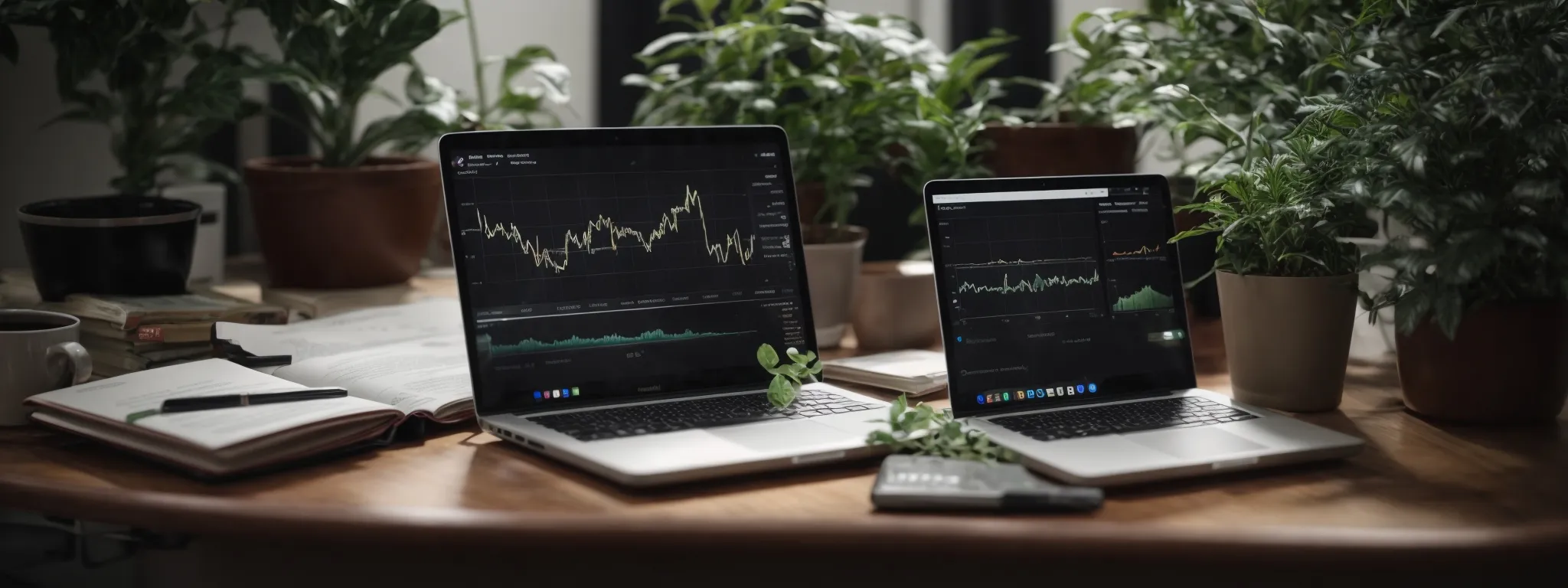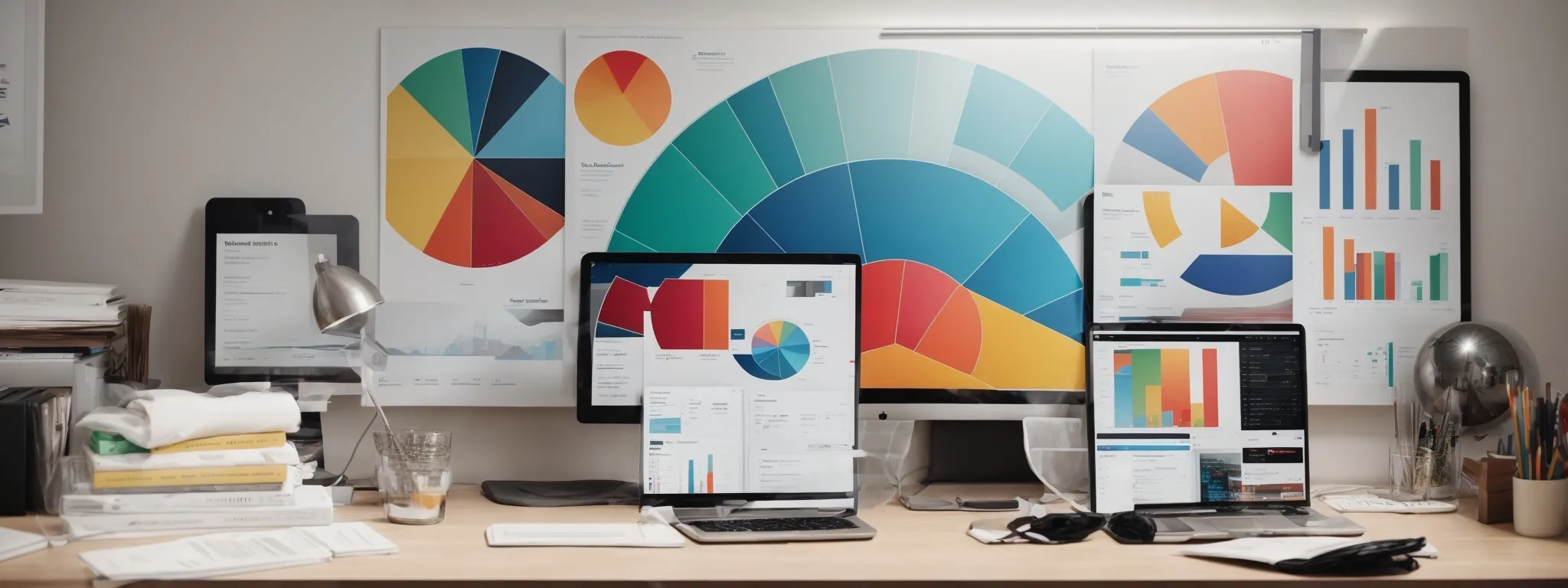A Closer Look at SEO’s 15 Overused Icons and Symbols
Unveiling the Most Overused SEO Icons and Symbols In the dynamic sphere of search engine optimization, icons and symbols serve as a visual shorthand, conveying complex SEO […]
Unveiling the Most Overused SEO Icons and Symbols
In the dynamic sphere of search engine optimization, icons and symbols serve as a visual shorthand, conveying complex SEO concepts with simple imagery.
Among these graphical elements, a few have risen to such prominence that their overuse has rendered them almost cliché.
While the magnifying glass and the globe might immediately signal SEO to a user, their frequent deployment may dilute the brand message and undermine creativity.
This article explores the most prevalent graphics in SEO and examines the impact of their repeated appearance on content strategy and brand identity.
Keep reading to discover fresh perspectives on navigating the visual language of SEO.
Key Takeaways
- Icons Like the Magnifying Glass Shape User Interactions and Search Functionality on Websites
- LinkGraph Champions the Use of Modern Iconography to Ensure Brands Stand Out in the Digital Marketplace
- The Overuse of Social Media Buttons and Global Icons May Hinder Brand Uniqueness and Distinction
- Gears and Cogs as Symbols for Technical SEO Are Being Replaced by More Representative Imagery by LinkGraph
- Pie Charts and Graphs, as Simplistic Data Icons, Do Not Adequately Convey the Analytical Depth That LinkGraph Provides in Its Services
Decoding the Magnifying Glass Icon in SEO

In the realm of Search Engine Optimization (SEO), icons play a subtle yet pivotal role in guiding users through a seamless digital voyage.
The magnifying glass stands as a testament to the quest for information, symbolizing the core of SEO’s intent: to search and reveal.
This emblem is not only ingrained in a web user’s psyche but also affects the user experience, acting as a beacon that users instinctively recognize as a tool for inquiry.
However, innovative alternatives to this classic icon are beginning to emerge, redefining the visual language of search.
In analyzing the prevalence of the magnifying glass in SEO imagery, LinkGraph acknowledges its significance while also exploring fresh iconography that can enhance a brand’s digital footprint, ensuring that the symbols employed resonate with the evolving expectations of the audience.
Why the Magnifying Glass Dominates SEO Imagery
The magnifying glass icon, entrenched deeply within the digital landscape, signifies precision and focus, hallmarks of a robust SEO strategy. Its widespread usage underscores a simple, universal truth—people seek clarity amidst the vast, often convoluted intricacies of the internet. Consequently, it’s adopted ubiquitously across platforms to symbolize search functionality, continually reinforcing its association with discovery and the pursuit of knowledge.
Renowned for instilling a sense of inquiry in its onlookers, the magnifying glass iis a visual shorthand for search engine prowess and a metaphor for the in-depth exploration that LinkGraph’s SEO services facilitate. It exemplifies the company’s commitment to detailed Backlink Analysis and exhaustive competitor scrutiny, forging a link between symbolic imagery and the tangible results that ensue from a meticulously crafted SEO campaign.
The Symbol’s Impact on User Experience
The magnifying glass icon wields substantial influence over user interaction with search features on a website. Its intuitive design accelerates the user’s navigation towards the desired content, streamlining the search experience and reinforcing user satisfaction.
As users engage with a web page, the presence of this icon instantly communicates the capability for query refinement and targeted search results. It serves as an unwavering user guide within the often overwhelming digital terrain:
- Symbolizing the search action, the magnifying glass encourages expedient content discovery.
- It underscores the search engine’s role as a conduit to relevant information.
- The icon’s placement, often conspicuous, ensures users can quickly utilize search features with minimal effort.
This kind of immediate recognition simplifies user interaction, effectively contributing to improved click-through rates (CTR) and, by extension, the overall brand experience provided by the website.
Alternatives to the Classic Search Icon
As digital landscapes evolve, so too must the symbols that populate them. LinkGraph pioneers the adoption of forward-thinking iconography, such as vector images and svg files, that speaks to the contemporary audience while maintaining the familiar essence of searchability.
| Icon | Visual Cue | User Relevancy |
|---|---|---|
| Magnifying Glass | Classic Search | Intuitive and Familiar |
| Vector Icons | Modern and Clean | Appealing to Newer Audiences |
| SVG Files | Scalable Graphics | Optimized for Various Devices |
LinkGraph innovates with the introduction of SEO icons that encapsulate the modern ethos of search engine optimization, transcending the conventional to deliver an enriched, efficient, and intuitive user experience. Distinctive design choices propel LinkGraph’s suite of services, ensuring their clients’ brands remain not only searchable but symbolically potent in a competitive digital marketplace.
The Ubiquity of Social Media Icons in SEO

In the fervent quest for optimization, social media icons have become a standard visual on nearly every digital platform, often overshadowing more unique and inventive graphical elements.
These icons are not merely decorative; their strategic placement can magnify a brand’s reach and forge dynamic pathways linking content to a broader audience.
As the digital community grows increasingly immune to these familiar symbols, however, SEO experts and web designers must re-evaluate their significance, questioning their impact on optimization practices and the overall aesthetic of website design.
LinkGraph steps into this sphere with a commitment to pioneering fresh approaches to social media iconography that align with contemporary SEO methodologies, nurturing an environment where both design and functionality coalesce for impactful user engagement.
Understanding the Overuse of Social Buttons
The overuse of social buttons on web pages often dilutes the uniqueness of a brand, transforming distinct online identities into a monotonous sea of like-minded competitors. Endless rows of social media icons may inadvertently clutter a site’s design, detracting from the core message and content meant to engage the audience.
LinkGraph, with acute awareness, points out that excessive reliance on familiar social buttons may hinder the distinctiveness of a user’s encounter. The company emphasizes the necessity of balancing icon use with strategic content placement and design:
| Icon Use | Implication for SEO | LinkGraph’s Approach |
|---|---|---|
| Overused Social Buttons | Potential Brand Overlap and User Distraction | Optimized Placement and Design Consistency |
| Strategic Icon Selection | Enhanced Brand Identity and User Focus | Guided Content Strategy and User Experience |
The Effect on SEO Strategies and Website Design
When SEO strategies prioritize the artful integration of social media icons, the result is a more cohesive brand narrative woven throughout the website design. These icons should function as harmonious elements that contribute to user-centric navigation and enhance the site’s overall search engine performance.
Moreover, the design of a website must reflect a balance between aesthetic appeal and SEO effectiveness, ensuring that icons serve their intended purpose without overshadowing vital content. The strategic use of social media symbols can amplify a brand’s visibility while maintaining a polished, professional web presence:
| Design Element | SEO Influence | User Experience |
|---|---|---|
| Strategically Placed Icons | Boosts Brand Visibility | Enhances Navigation |
| Harmonious Icon Integration | Complements On-Page SEO | Preserves Content Focus |
Fresh Approaches to Social Media Iconography
Innovating within the parameters of digital evolution, LinkGraph champions the reimagining of social media iconography, seamlessly integrating these icons with a brand’s unique aesthetic. This strategic approach not only fortifies the brand’s identity but also plays an instrumental role in aligning with sophisticated SEO strategies, resulting in a more compelling and distinguishable online presence.
Through thoughtful design and the embracement of cutting-edge graphics, social media icons can transform from mundane to magnetic, captivatedly drawing the user’s eye. The reinvention of these icons by LinkGraph involves leveraging custom illustrations and interactive elements, which serve to engage the audience and subtly enhance the website’s search traffic potential without compromising the clean, professional look that users have come to expect.
Unraveling the World Wide Web Globe Icon

As digital marketers scour the vast topography of the internet, globe icons frequently serve as emblems, signifying the boundless reach and interconnected nature of the web.
These symbols are ubiquitous, providing a snapshot of global internet connectivity and hinting at the sweeping expanse of information at the fingertips of users.
However, their pervasive use in SEO-themed visuals raises questions about the potential for cliché and the pursuit of distinction within the digital market.
In the search for differentiation, attention turns towards novel graphic solutions that veer from the well-trodden path of globe imagery, prompting a deeper examination into creative symbol development that can embody the essence of SEO without succumbing to convention.
Globe Icons as a Metaphor for Internet Connectivity
Globe icons encapsulate the very ethos of the internet’s boundless nature, underscoring its role as a facilitator of global communication and data exchange. They stand as symbols of the network’s omnipresence, suggesting that the search for information knows no geographical bounds, a principle deeply ingrained in the practice of search engine optimization carried out by experts at LinkGraph.
In SEO contexts, these globe symbols are not mere placeholders; they personify the vast potential for market share expansion and the conquering of international SERPs. LinkGraph harnesses this metaphorical power, integrating globe icons into their strategic approach to international SEO, and ensuring their clients’ brands resonate across the infinite digital expanse.
Analyzing the Globe’s Prevalence in SEO-related Content
The globe icon in SEO materials can often feel like a visual echo, constantly resurfacing across various brand expressions and digital strategies.
Its ubiquitous presence in SEO-related content nods to the idea of universal connectivity and the expansive reach of the internet, yet it runs the risk of becoming a generic visual cliché that lacks differentiation:
| Global Icon Usage | SEO Implication | Impact on Brand Distinction |
|---|---|---|
| Prevalent | Represents Ubiquity & Reach | Potential for Generality |
| Selective | Denotes Focused Global Strategy | Enhances Brand Uniqueness |
LinkGraph, through its discerning SEO services, embraces alternatives that balance the symbol’s collective meaning with innovative visuals, ensuring their clients’ brands stand apart in a competitive digital landscape.
Seeking Originality: Unique Ideas for Web Symbols
In the quest for distinctive web symbols that steer clear of industry norms, LinkGraph takes the initiative by crafting logos and icons that exhibit a brand’s unique narrative. Vibrant designs that merge modern iconography with bespoke graphic elements set a benchmark for originality, helping companies to distinguish themselves in the digital space.
LinkGraph channels the essence of a brand’s ethos into custom-made symbols, nurturing an authentic visual vocabulary that captivates the audience while remaining congruent with advanced SEO practices. This commitment to ingenuity transcends conventional globe imagery, opting instead for iconography that mirrors the innovative spirit of a connected, yet diverse, online community.
Gears and Cogs: The SEO Machinery Overkill

Within the intricate world of Search Engine Optimization, gears and cogs have become ubiquitous metaphors, often representing the technical mechanisms that propel SEO forward.
The imagery of a well-oiled machine, replete with these interlocking components, implies a level of precision and efficiency that resonates deeply with the technical aspects of SEO.
However, this cliché lacks the imagination required to encapsulate the full scope of what companies like LinkGraph offer through innovative approaches to technical SEO concepts.
It is within this context that the inherent need arises for a creative departure from overused symbols, driving towards a representation of SEO that more accurately reflects its dynamic and evolving nature.
Gears as Symbols of the SEO Mechanism
The imagery of gears and cogs has long been associated with the meticulous process of SEO, symbolizing the intricate workings of algorithmic fine-tuning and data processing. These icons represent the behind-the-scenes labor, the optimization of countless ranking factors that underpins the visible success of a webpage in the SERPs.
LinkGraph approaches the notion of technical SEO not as a static array of mechanical parts but as a dynamic and ever-evolving practice. Utilizing the principles of technical SEO, the company integrates comprehensive site audits and technical refinements to enhance the performance and user experience of their clients’ digital assets, moving beyond the clichéd connotations of gears in perpetual motion.
The Cliché of SEO as a Well-Oiled Machine
In the intricate tapestry of SEO, the overuse of gears and cogs as symbols has rendered them nearly synonymous with a mechanistic view of the discipline. Such rudimentary imagery oversimplifies SEO’s complexity, suggesting a plug-and-play framework where precision and finetuning ostensibly yield predictable outcomes.
LinkGraph disrupts this narrow view, championing a more organic approach that acknowledges the adaptability required for SEO success. Emphasizing creative strategies over mechanical formulas, the company recognizes that search engine optimization is as much about agility and insight as it is about technical adjustments:
| Icon | Simplistic Implication | LinkGraph’s Complex Reality |
|---|---|---|
| Gears and Cogs | Standardized SEO Tactics | Adaptive, Insight-Driven Strategies |
| Machine Imagery | One-Size-Fits-All Approach | Bespoke, Sophisticated Solutions |
True to the ever-evolving digital landscape, LinkGraph transcends the conventional, offering a nuanced understanding of SEO’s many layers. Rather than confining their services to a rigid system, their nuanced methodology intertwines with the art and science of SEO, positioning their clients for success in a competitive online marketplace.
Inventive Iconography for Technical SEO Concepts
In the dynamic arena of technical SEO, LinkGraph leads the way, substituting the archaic iconography of gears and cogs with fresh, contemporary symbols. These new visuals depict the sophistication of their comprehensive SEO strategies, transcending the mechanical impression to showcase the multifaceted nature of digital optimization efforts.
LinkGraph’s inventive graphics are meticulously crafted to encapsulate the essence of technical SEO, infusing iconic elements with modern flair that parallels the high-level analytics and innovative tactics employed. This revolutionary iconography conveys complex technical concepts through visually compelling and intellectually stimulating designs, mirroring the cutting-edge services LinkGraph offers to its discerning clientele.
The Overused Checklist: A Staple in SEO Graphics

In the intricate dance of digital optimization, the checklist has emerged as an emblematic fixture, often touted as the epitome of organization and procedural adherence in the SEO realm.
As an elemental graphic, it conveys the myriad of tasks integral to search engine optimization—from the technical tweaks to the creative content strategies.
Despite its utility, the pervasive use of checklist iconography across industry-related materials has led to its ubiquity, prompting progressive companies like LinkGraph to reconsider its representation.
Now, there’s an industry-wide curiosity to understand the saturation, explore the deeper implications of this imagery, and evaluate creative pathways that might refresh the checklist icon for the modern SEO toolkit.
Checklists as the Go-to Symbol for SEO Tasks
The checklist icon has cemented its place as a ubiquitous symbol within the SEO industry, representing the structured approach required to optimize a website. Serial tasks, often denoted by checkmarks, suggest a methodical path to achieving top search engine rankings.
- Identifying target keywords
- Conducting on-page SEO Audits
- Executing backlink analysis
- Crafting engaging Content Strategy
- Implementing technical SEO enhancements
This emblem of organization not only underscores the necessity of adherence to SEO best practices but also evokes a sense of achievement. As each item is marked complete, it progressively narrates the journey toward enhanced search visibility and digital success.
The Saturation and Implications of Checklist Imagery
Within the domain of SEO, the checklist icon has reached a point of saturation, teetering on the edge of becoming a visual cliché. Its omnipresence across SEO dialogue and literature risks trivializing the nuanced complexity inherent in optimizing a website, reducing it to a seemingly simplistic process.
LinkGraph observes that the implications of this overuse are significant; they dilute a company’s unique value proposition and potentially misguide customers’ perceptions of SEO. A comprehensive approach which involves strategic on-page optimizations, diligent backlink analysis, and dynamic content strategy, demands visual representation that transcends the ordinary, encapsulating the depth and breadth of services like those provided by LinkGraph.
Evolving the Checklist Icon for Modern SEO
In an industry teeming with constant innovation, the necessity to evolve the checklist icon becomes clear for businesses like LinkGraph, intent on illustrating the agility of modern SEO practices. They strive to transform the conventional tick mark into a symbol that resonates with today’s dynamic search landscape, empowering users to interact with content that is both instructive and engaging.
Consequently, LinkGraph offers a reimagined visual interpretation of the SEO process, moving beyond the binary of completed tasks to illustrate a continuous cycle of analysis, optimization, and growth. This approach captures the essence of a strategy that adapts in real time to search engines’ evolving algorithms and user behaviors:
| Simplified Perception | Evolving Concept | LinkGraph’s Interpretation |
|---|---|---|
| Linear Checklist | Strategic Process Cycle | Agile, Ongoing Analysis and Refinement |
| Task Completion | Persistent Development | Continual Growth and Adaptation |
The progression from a static checklist to a nuanced, growth-focused visual tool underscores LinkGraph’s forward-thinking approach. This innovated iconography champions a sophisticated perspective on SEO, emphasizing continuous improvement and strategic finesse over ticked boxes and complacency.
Pie Charts and Graphs: Oversimplified SEO Data Symbols

In the intricate world of search engine optimization, pie charts and graphs have ascended to icon status, widely employed as shorthand for data prowess and analytical depth.
Yet their prevalence hints at a creeping simplification—distilling multifaceted datasets into elementary shapes that may not embody the full spectrum of SEO insights.
The task for industry frontrunners like LinkGraph is thus to elevate data visualization, moving beyond these oversimplified emblems to icons that truly capture the finesse of SEO data interpretation.
By critiquing the reliance on such reductive symbols and advocating for more complex representations, they aim to enrich the visual lexicon of SEO and deepen the user’s understanding of the metrics shaping their digital strategy.
The Significance of Data Visualization in SEO
Data visualization stands as a cornerstone of Search Engine Optimization, with pie charts and graphs traditionally serving as visual totems of analytical acumen. Through these instruments, LinkGraph skillfully distills complex search data, casting light on patterns and insights essential for informed decision-making within SEO strategies.
Nevertheless, in a landscape brimming with data, the gravitas of proper visualization cannot be overstated; it elevates the narrative behind numbers, shaping abstract metrics into actionable intelligence. LinkGraph’s sophisticated data visualization goes beyond rudimentary charts to encapsulate the intricacies and dynamism of SEO performance, helping brands navigate toward digital prominence.
Critiquing the Overuse of Simplistic Data Icons
When it comes to representing the depth of SEO data, the habit of turning to pie charts and graphs is akin to narrating a complex saga through a series of stick figure drawings. These symbols, while familiar and easily digested, frequently fall short in showcasing the nuanced layers and full breadth of analytical insights that companies like LinkGraph decode for their clients daily.
The cumulative effect of these ubiquitous data icons dilutes the impact of sophisticated analysis. As the LinkGraph team works tirelessly, these simplistic illustrations do not do justice to the intricate processes that unfold during comprehensive data examination:
- Complex data sets reduced to simplistic segments
- Favoring broad overviews at the expense of granular details
- Underrepresentation of the dynamic shifts and trends within SEO metrics
LinkGraph consistently endeavors to present data with the richness it deserves, steering clear of reductive iconography. True understanding of SEO demands visuals that reflect the complexity of its analytics, delivering a level of detail that both informs and empowers its clients.
Infusing Complexity and Nuance Into SEO Data Symbols
In their commitment to elevating SEO data representation, LinkGraph infuses its visual assets with a level of sophistication that matches the complexity of search engine analytics. Instead of settling for the graphical status quo, the company innovates by designing symbols that are as intricate as the SEO strategies they reflect, conveying the full narrative behind the figures.
With an eye for detail and a drive for precision, LinkGraph’s nuanced symbols bring a heightened clarity to the data, delving into the subtleties without overwhelming the viewer. This approach ensures that each graph and chart does more than condense information; it tells a comprehensive story of digital success molded through strategic SEO practices.
Frequently Asked Questions
Why are magnifying glass icons so commonly used in SEO graphics?
Magnifying glass icons embody the essence of search, symbolizing the keen investigation and discovery process central to SEO’s goal of enhancing visibility in search engine results pages. They serve as a visual metaphor for the meticulous scrutiny that SEO experts, like those at LinkGraph, apply to web pages to optimize them for target keywords and user search queries.
What is the significance of social media icons in the field of SEO?
Social media icons play a pivotal role in search engine optimization as they facilitate content sharing and increase user engagement, both of which can signal a website’s value to search engines. By embedding these icons prominently on a web page, a company can boost its brand’s exposure and foster connections with its audience, potentially improving its search result performance.
How does the globe icon represent the concept of the World Wide Web in SEO?
The globe icon stands as a universal metaphor for the World Wide Web, encapsulating its boundless reach and interconnectedness, which are foundational to the principles of SEO—where a web page aims to gain visibility across the vast expanse of the internet. In the context of search engine optimization, this symbol underscores the global potential for content to resonate, linking users from disparate locales through a single, optimized search query.
Why are gears and cogs frequently used as symbols in SEO graphics?
Gears and cogs represent the intricate, interconnected mechanisms of SEO strategies much like a machine’s parts work collectively towards a common goal. In the realm of search engine optimization, where every element from keyword density to backlink profiles must function harmoniously for optimal performance, the symbolism of machinery effectively communicates the complexity and precision required for a successful SEO campaign.
What is the purpose of using checklists in SEO designs and why are they so prevalent?
Checklists serve an essential role in SEO design by ensuring comprehensive coverage of critical elements, both technical and creative, that contribute to a site’s search engine performance. Their prevalence stems from the need for a methodical approach to balance a multitude of tasks, from on-page optimizations to backlink analysis, securing consistency in execution and quality across SEO campaigns.
Conclusion
In conclusion, the scrutiny of overused SEO icons such as magnifying glasses, social media buttons, globe imagery, gears and cogs, checklists, pie charts, and graphs highlights a crucial narrative: the need for innovation in visual representation within the SEO industry.
These symbols, once effective at conveying concepts of search, connectivity, and analytical precision, are now at risk of oversimplification and cliché, potentially masking the intricate and evolving nature of SEO strategies. Title tags, competitors, and letters play a role in the visual communication of SEO concepts.
Companies like LinkGraph are leading the charge by adopting more sophisticated and distinctive iconography. This move not only enriches the visual lexicon of SEO but also ensures that the intricate work behind SEO services is appropriately symbolized. The use of vector images, comments, and brand names contributes to a deeper understanding of SEO’s dynamic landscape for clients and users alike.
The incorporation of various graphic design elements, such as vector icons, image optimizers, and logo designs, adds a layer of creativity to visual representations. Authors and blogs play a crucial role in shaping the narrative, while file sizes, infographics, and thousands contribute to the visual appeal and information dissemination.
Video marketing, SEO strategy, and reader engagement further enhance the storytelling aspect of SEO visuals. Engaging with comments and replies fosters a sense of community and interaction. Logotypes and blog posts are essential components of a brand’s identity and communication strategy.
Competitor analysis, SEO factors, and versions contribute to the evolving nature of SEO, emphasizing the need for dynamic and adaptable visual representations. Organic search, internet marketing, and free SEO tools represent the broader landscape of digital marketing.
Logo maker tools, image SEO, newsletters, founders, and flat designs are integral components of a comprehensive visual strategy. The use of these elements ensures that SEO visuals effectively communicate complex ideas while remaining visually appealing. In essence, the evolution of SEO iconography is a collaborative effort that involves a thoughtful blend of creativity, innovation, and a deep understanding of the industry’s dynamics.















































































